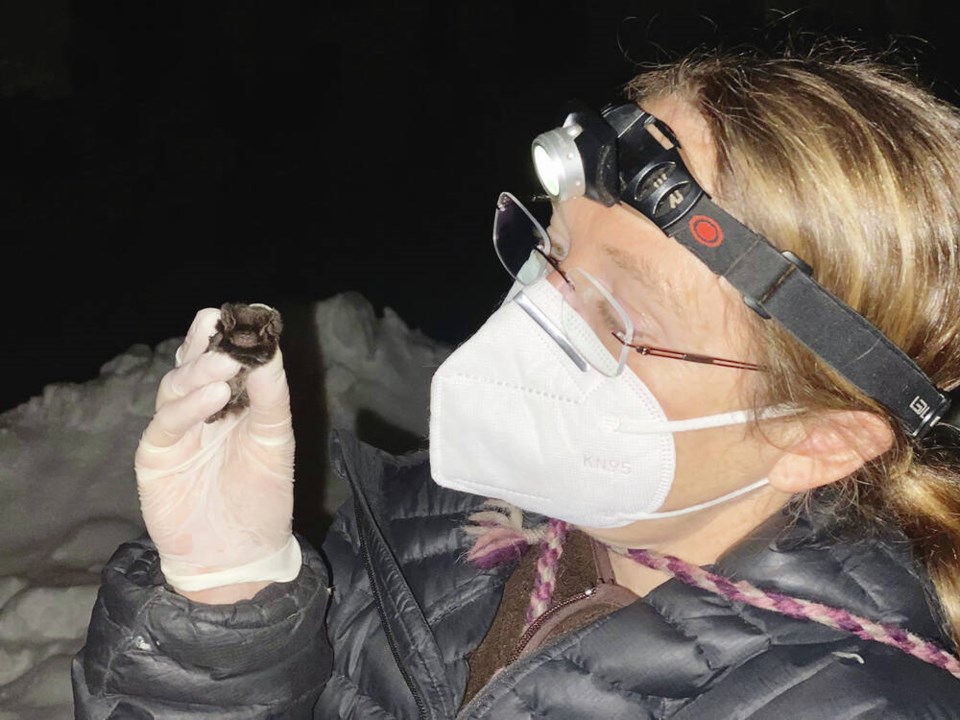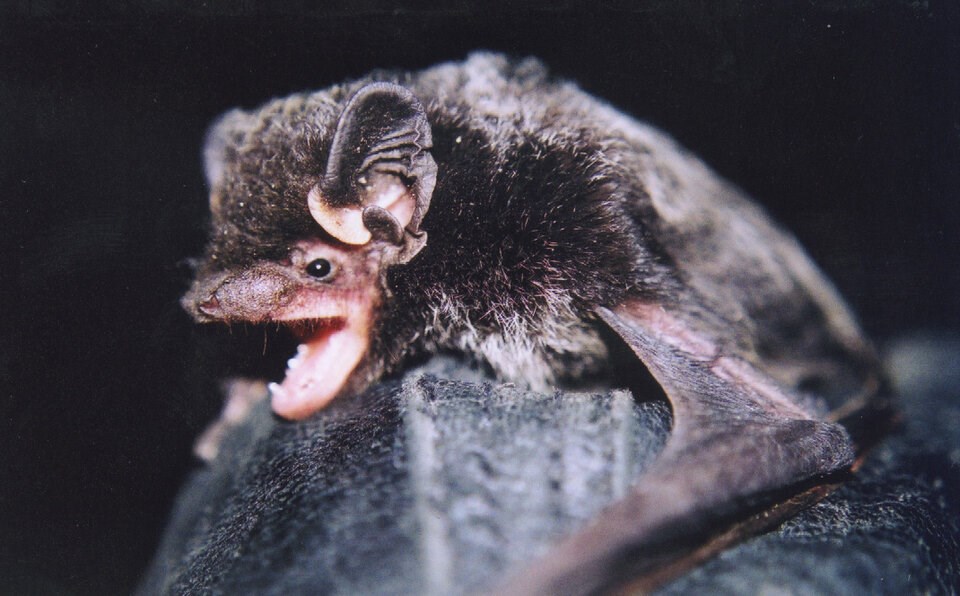A B.C. researcher has recorded the songs of singing bats in the second such discovery ever recorded in North America.
It’s long been understood that bats use sound to echolocate small insect prey and navigate their environment. But the latest recordings of silver-haired bats outside two old mines in B.C.’s Interior go much further, said Cori Lausen, a lead author in a study published in the journal Wildlife Society Bulletin last month.
Listen to the bats in real-time, and the series of clicks and chirps get mushed together in the human ear. But slow it down, and Lausen said the songs comes to life.
“In my mind, it's much more reminiscent of bird songs,” she said.
The recordings capture three sequences of acoustic vocalizations, or song phrases, as bats flew freely outside their hibernacula, notes Lausen, who heads the bat conservation at the Wildlife Conservation Society Canada. Each bat song includes three sections — a lead call, a droplet call, and a series of chirps.
Until Lausen and her colleague’s discovery, only one other species in the North America — the Brazilian free-tailed bat — was known to produce songs, defined in the study as “acoustic vocalizations with distinctive syllable types in series or in complex motifis.”
Lausen said they don’t know why the bats sing, but they suspect part of it could be connected to courtship and mating as is seen in other species.
“For the most part, we have absolutely no idea what they’re saying,” she said.
'A little bit batty'
They’re not just hibernating in the mines, they’re hibernating in the trees.
Silver-haired bats are one of 17 bat species in B.C., and among 1,100 worldwide.
Each species fills an important ecological niche, helping control insect populations and pollinate plant species, among other services.
Often active at night and tricky to study up close, little is known about many of the species.
Lausen says learning silver-haired bats can sing has been decades in the making.
She began setting up listening devices across the province 20 years ago. Like most researchers in the field at the time, once the summer months were over, she would pack up her gear. But around 2010, she decided to leave the listening devices out for the winter.
“Nobody was putting out the detectors outside of the summer,” she said. “Everyone thought I was a little bit mad. A little bit batty.”
Lausen started hearing the songs all over the province. But pinning down what species was singing and which were making ultrasonic sounds that didn’t rise to that bar proved nearly impossible.
Old B.C. mines key to discovery
The latest study pulls in recordings stretching back to 2011 from rocky or forested terrain in 23 locations scattered throughout B.C., Washington, Idaho, Montana, Northern California, Utah and Colorado.
Some of the overwintering roosts were in bat boxes, others were under the bark of Douglas fir and Western red cedar, or in the crevices of buildings. Listening locations were set up in rocky crags and bluffs in the Okanagan.
But the two sites critical to the study were two old mines, one a deep abandoned mine complex outside Nelson, B.C.; another a shallow mine in the Central Kootenays near the U.S. border.
Unlike the hundreds of other mines explored by Lausen and her partners — often cavers — these mines were being used as hibernacula for a species that was always thought to have migrated south in the winter.
“We didn’t even know this bat overwintered,” said Lausen.
Starting in 2011, the passive detectors were programmed to start recording when a bat ultrasound was detected. Over the next decade, the researchers recorded more than 3,000 15-second “bat passes,” of which 1,875 were found to contain at least a partial song.

Most of the songs were recorded when the bats were flying around. That made it hard to tell which species was singing, a silver-haired bat or one of the many other species in the region like the big brown bat.
To answer that question, Lausen and her colleagues set up nets at the cave entrance. But catching a species that can echolocate its surroundings is not easy.
“They can see our nets with their ears,” Lausen said. “You have to catch them off guard. Put it around a bend and — boom. You got a bat.”
Most years, the scientists caught silver-haired bats. In the shallow mine, they detected bat songs at a time only the silver-haired bat was present — a scientific smoking gun.
After vetting the bat recordings, the researchers found more than half the songs were captured in the winter, and more than 93 per cent were produced outside of summer.
The silver-haired bat, it turned out, was a fall and winter singer, a time when in the past, nobody had been listening.
“For the longest time, we didn’t know,” Lausen said. “It was the only place where we could reliably go and piece together the puzzle.”
A tool to help an endangered species
There still remain several unanswered questions. It’s still not clear whether both males and females are singing. And when they do sing, what are they saying?
Answering those questions will help scientists get one step closer to helping the endangered bats survive threats from logging and industrial development.
Lausen said scientists have recently learned silver-haired bats hibernate across B.C. and parts of Alaska.
While the silver-haired bats in the study hibernated in mines, scientists have learned they also spend winters in the branches of trees.
Distinguishing the silver-haired bat’s songs could help biologists determine if it is present before a forest is logged.

“We have to start learning something about them because we're destroying the roosts constantly when we cut down forests,” Lausen said.
For those that migrate, pulses of bats have been found dead after crossing paths with wind turbines. Lausen says listening to silver-haired bats will help scientists map out where and where not to install the infrastructure.
But first, she said, that requires teaching more people how to use bat detectors and then deploying them across the landscape.
“Getting more people using this tool, I think is really critical because we simply can't do proper conservation,” she said.




